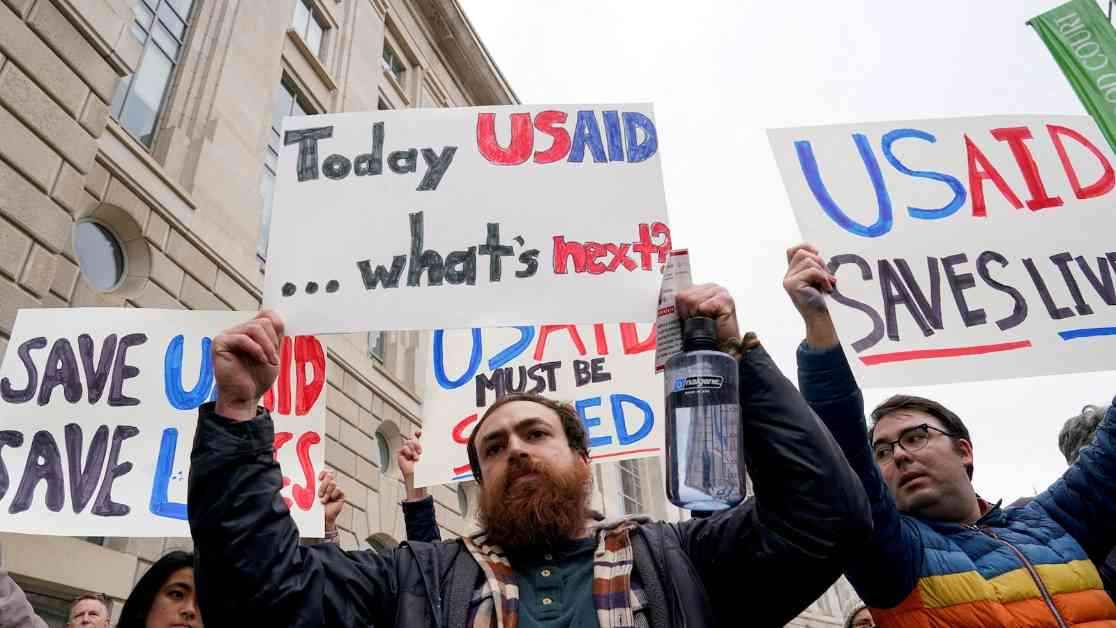A federal judge has blocked the Trump administration’s plan to place over 2,000 employees of the United States Agency for International Development (USAID) on leave at midnight. This move comes amidst the administration’s efforts to downsize USAID’s workforce from 14,000 employees to just 300, as part of broader government spending cuts. The decision was made following a lawsuit filed by two foreign service unions against the federal government.
After a brief hearing, U.S. District Judge Carl Nichols, appointed by Trump, announced his intention to issue a temporary restraining order preventing the administration from placing 2,200 USAID employees on administrative leave as scheduled. The order aims to halt the “accelerated removal” of employees from their overseas posts, offering a reprieve to those affected. Judge Nichols promised a detailed written order before midnight, explaining the rationale behind his decision.
The Department of Justice revealed that 500 USAID employees had already been placed on leave, with another 2,000 set to follow suit. Acting assistant attorney Brett Shumate cited corruption and fraud concerns as the reason for the layoffs, emphasizing that the president had deemed these actions necessary. The lawsuit highlighted the administration’s unilateral efforts to diminish USAID without Congressional approval, pushing back against what they deemed unconstitutional and illegal actions.
Subheading: Plaintiffs’ Concerns and Humanitarian Impact
The lawsuit painted a grim picture of the consequences of these actions, pointing out the immediate humanitarian crisis that ensued from dismantling USAID’s operations. Families faced abrupt dislocation, children were uprooted from schools, and vulnerable individuals were left without access to critical healthcare. The abrupt halt in aid programs led to a domino effect across the globe, jeopardizing American jobs and national security interests.
As the lawsuit unfolded, it detailed the sequence of events that culminated in Trump’s aggressive measures against USAID, from executive orders freezing foreign aid to the abrupt layoffs that brought vital programs to a standstill. The plaintiffs underscored the catastrophic impact of these decisions on both employees and recipients of aid worldwide, urging the court to intervene and declare the administration’s actions unlawful.
Subheading: Legal Battle and Congressional Authority
The core argument of the lawsuit centered on the administration’s overreach in dismantling USAID without Congressional oversight. By bypassing the legislative branch, Trump’s actions were deemed unconstitutional and unauthorized, paving the way for legal challenges from the affected parties. The plaintiffs sought a court order to cease the shutdown of USAID operations carried out without proper authorization, emphasizing the critical role of Congress in such decisions.
The legal battle over USAID’s future highlighted the broader implications of unchecked executive power and the importance of upholding democratic principles in governance. The clash between the administration’s cost-cutting measures and the humanitarian mission of USAID underscored the delicate balance between fiscal responsibility and ethical obligations. As the lawsuit unfolded, it became apparent that the fate of USAID rested not just on legal technicalities but on fundamental questions of accountability and transparency in government.
In conclusion, the fight to protect USAID from unwarranted dismantling serves as a testament to the resilience of the American democratic system and the commitment to upholding humanitarian values in the face of adversity. As the legal battle unfolds, the outcome will not only shape the future of USAID but also set a precedent for the limits of executive authority and the role of Congress in safeguarding public interests. The fight for justice and accountability continues as employees, unions, and advocates stand united in defense of USAID’s mission and values.


